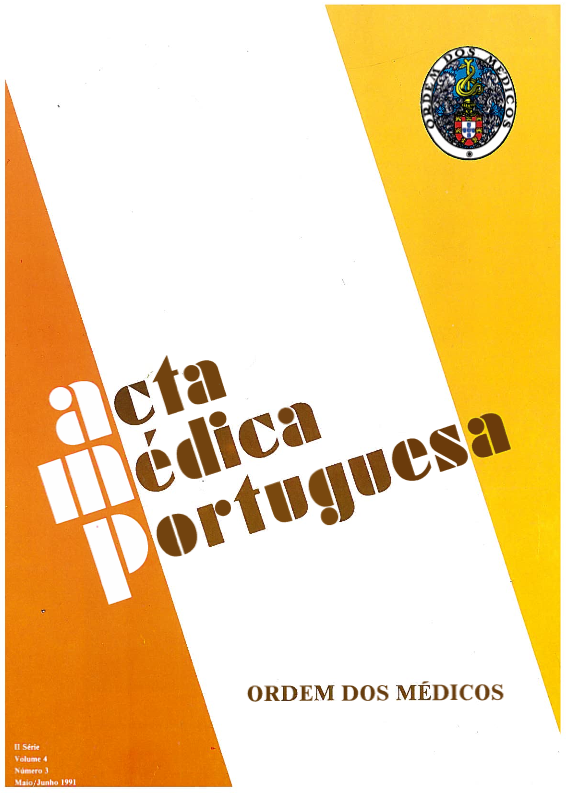Neoplasia oculta primária: estudo retrospectivo de 3 anos num serviço de medicina interna.
DOI:
https://doi.org/10.20344/amp.3347Resumo
The authors review all the cases of Carcinoma of Unknown Primary Site admitted to a medical service during a 3-year period (1987-1989). These cases represented 9% of all the neoplastic diseases admitted during the aforementioned period. Most of the patients presented extensive metastatic disease. The main histologic type was adenocarcinoma. The most useful of all the ancillary exams requested for primary localization and staging purposes was the computerized axial tomography (CT). The primary localization was achieved in two cases (one while the patient was still alive, and one on autopsy). The low performance status of the patients, together with the existence of advanced metastatic disease, precluded more than palliative therapy in most of the cases. The mortality of this series was 40% (4/10), with 3 autopsies performed. The authors compare their experience with the literature available, focusing the need for a work-up based on strict diagnostic criteria based on the histology and supported by specific laboratory tests. They also underline the value of the CT scan as the most useful exam in these circumstances.Downloads
Downloads
Como Citar
Edição
Secção
Licença
Todos os artigos publicados na AMP são de acesso aberto e cumprem os requisitos das agências de financiamento ou instituições académicas. Relativamente à utilização por terceiros a AMP rege-se pelos termos da licença Creative Commons ‘Atribuição – Uso Não-Comercial – (CC-BY-NC)’.
É da responsabilidade do autor obter permissão para reproduzir figuras, tabelas, etc., de outras publicações. Após a aceitação de um artigo, os autores serão convidados a preencher uma “Declaração de Responsabilidade Autoral e Partilha de Direitos de Autor “(http://www.actamedicaportuguesa.com/info/AMP-NormasPublicacao.pdf) e a “Declaração de Potenciais Conflitos de Interesse” (http://www.icmje.org/conflicts-of-interest) do ICMJE. Será enviado um e-mail ao autor correspondente, confirmando a receção do manuscrito.
Após a publicação, os autores ficam autorizados a disponibilizar os seus artigos em repositórios das suas instituições de origem, desde que mencionem sempre onde foram publicados e de acordo com a licença Creative Commons









